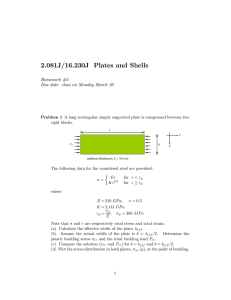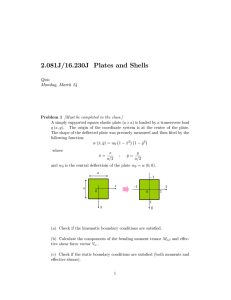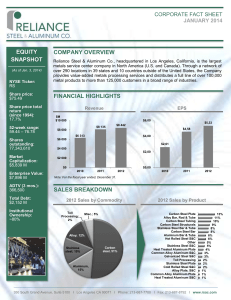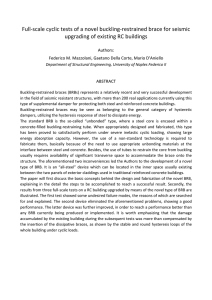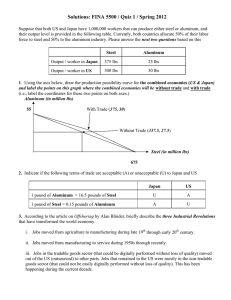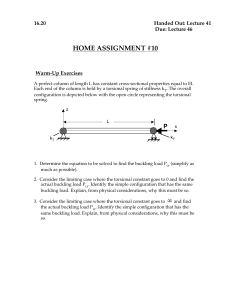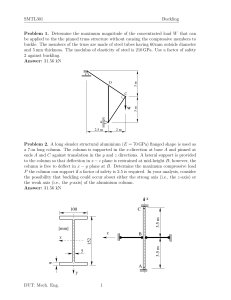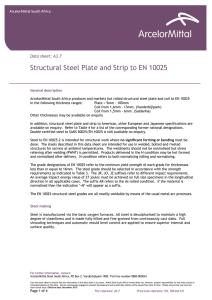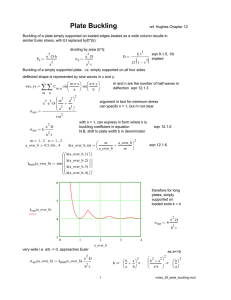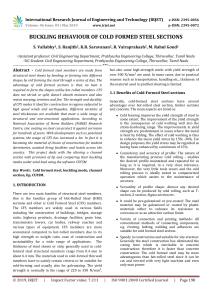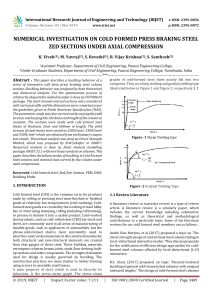2.081J/16.230J Plates and Shells Homework #4
advertisement
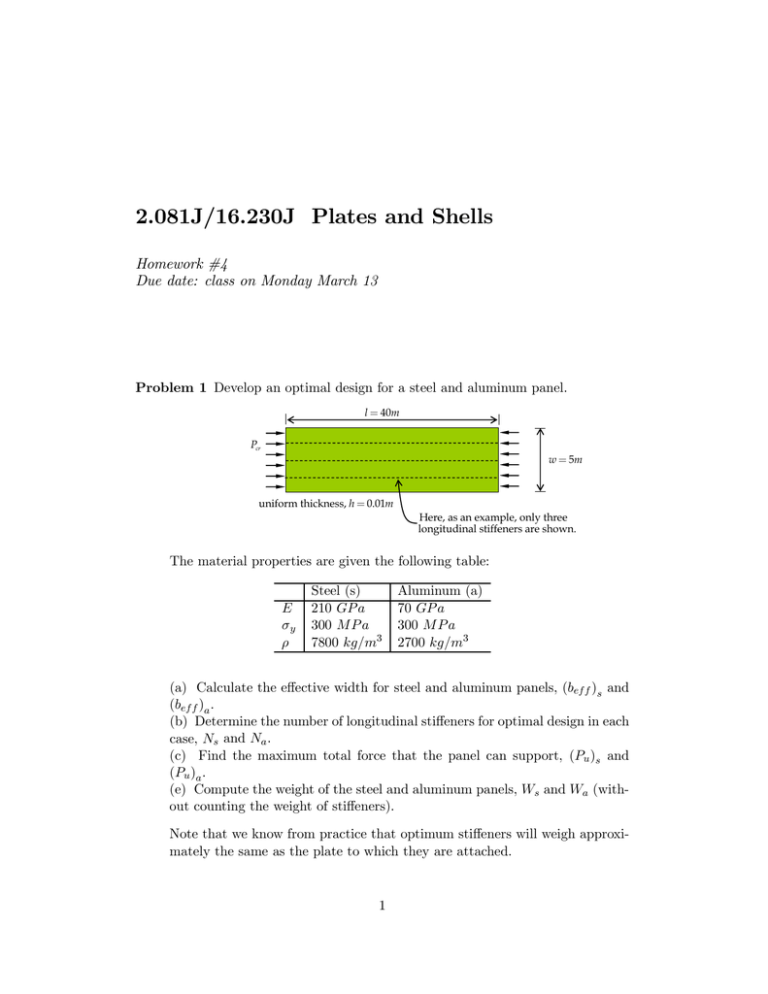
2.081J/16.230J Plates and Shells Homework #4 Due date: class on Monday March 13 Problem 1 Develop an optimal design for a steel and aluminum panel. l = 40m Pcr w = 5m uniform thickness, h = 0.01m Here, as an example, only three longitudinal stiffeners are shown. The material properties are given the following table: E σy ρ Steel (s) 210 GP a 300 M P a 7800 kg/m3 Aluminum (a) 70 GP a 300 M P a 2700 kg/m3 (a) Calculate the effective width for steel and aluminum panels, (bef f )s and (bef f )a . (b) Determine the number of longitudinal stiffeners for optimal design in each case, Ns and Na . (c) Find the maximum total force that the panel can support, (Pu )s and (Pu )a . (e) Compute the weight of the steel and aluminum panels, Ws and Wa (with out counting the weight of stiffeners). Note that we know from practice that optimum stiffeners will weigh approxi mately the same as the plate to which they are attached. 1 Problem 2 Consider a cold-form steel (E = 210 GP a, ν = 0.3) open channel sec tion column. where b1 = 0.1 m, b2 = 0.05 m, l = 3.5 m, and h = 0.001 m. (a) Determine the magnitude of the global Euler buckling load, (Pcr )column . (b) Determine the local plate buckling load, (Pcr )plate . (c) Replace now the open channel section with a closed rectangular section by adding (welding) additional top plate with the same thickness, h. How much will the global and local buckling load increase? (d) For the rectangular section, can you come up with an optimal solution in which the local and global buckling loads are the same? Here, keep the length of the flanges (b1 and b2 ) unchanged, but change the thickness of the section. (e) What will be the percentage of weight advantage and possible gain or loss in strength? 2
